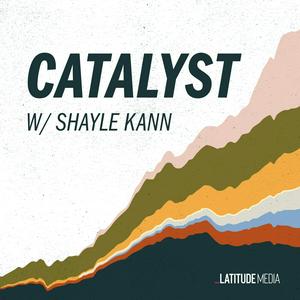Specialized AI brains for physical industry
Everyone wants a piece of general purpose models. Instacart has deployed ChatGPT for recipes and meal planning. The Mayo Clinic is using it to summarize patient records. Schneider Electric is using an OpenAI LLM to generate sustainability reports.
With such powerful models, what’s the need for specialized models built for specific industries, especially in climate tech?
In this episode, Shayle talks to Sam Smith-Eppsteiner, partner at Innovation Endeavors. She recently wrote a blog post arguing that there may be a market that general purpose models struggle to meet: physical industries where training data is siloed, unstructured, and private. She talks through climate-relevant examples like Cadstrom’s copilot for electrical engineers, Hubflow’s automated trucker scheduling, WeaveBio’s AI-powered platform for regulatory approvals. Shayle and Sam also cover topics like:
Applicable cases, like cross referencing complicated technical manuals, repetitive manual work that employees dislike, and technical compliance
The technical knowledge lost when workers retire and how specialized AI could help
What it takes to build specialized models, including data access, vector embedding, prompt engineering, and fine tuning
What budget categories businesses might use to pay for specialized models
Selling the technology (i.e. the traditional SAAS model) vs selling the work (i.e. answers informed by models)
Recommended resources
Innovation Endeavors: Specialized brains for industry: the immense potential for domain-specific AI
Innovation Endeavors: The next industrial unicorn: Where is AI rapidly transforming the physical economy
Catalyst: The coming robotics wave
Latitude: How utilities are designing and embedding AI operating models
Credits: Hosted by Shayle Kann. Produced and edited by Daniel Woldorff. Original music and engineering by Sean Marquand. Stephen Lacey is executive editor.
Catalyst is brought to you by Anza, a platform enabling solar and storage developers and buyers to save time, reduce risk, & increase profits in their equipment selection process. Anza gives clients access to pricing, technical, and risk data and tools that they’ve never had access to before. Learn more at go.anzarenewables.com/latitude.
Catalyst is brought to you by EnergyHub. EnergyHub helps utilities build next-generation virtual power plants that unlock reliable flexibility at every level of the grid. See how EnergyHub helps unlock the power of flexibility at scale, and deliver more value through cross-DER dispatch with their leading Edge DERMS platform, by visiting energyhub.com.
